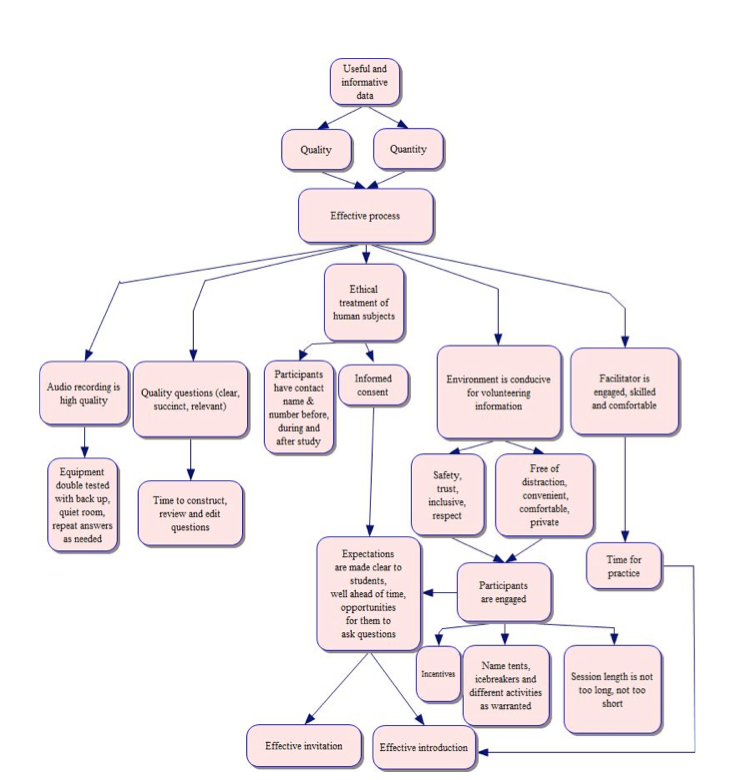Earlier this month, I had the opportunity to present a session at SUNY’s annual Conference on Instructional Technology which was hosted here at Cornell. The conference was well attended with good representation across SUNY institutions. Attendees expressed their appreciation for the wealth of topics they could choose from. The campus was humming with activity and to be honest, I didn’t expect many folks at my session, as it was scheduled to begin at 4:45pm. When I arrived to a room full of people taking their seats, I knew it had less to do with me, than it did to do with my topic; Using Student Focus Groups to Assess Technology and Learning Design. My participants shared with me, not only are institutions placing greater importance on data-driven decisions, the role of the student voice in those decisions is gaining recognition. I have been conducting focus groups for over 15 years.
Student focus groups are an effective method to obtain feedback from learners about instruction and instructional technology. Compared to other methods, data gathered by way of student focus groups tends to be more direct and richer.
Benefits
• Communication is two-way and synchronous, which cannot be achieved with surveys and observation methods.
• Facilitators have opportunities probe deeper and/or to guide discussion into unplanned areas as warranted.
• When assured that they do not necessarily have to reach consensus, students provide several points of view.
• Feedback from today’s students often contains surprises to those of us who believe we “know” what students think.
Challenges
• Careful attention must be given to policies and procedures related to institutions’ mandates on human subject treatment, informed consent and the secure collection of data.
• Significant time and planning is required, especially for question construction, logistics, incentives and establishing an environment of trust.
• A focus group is not something that can be thrown together – a fact that may or may not be understood by those requesting the session.
• Listening to and/or transcribing audio tapes can take significant amounts of time and in some instances, financial resources.
 Figure 1 presents a model of student focus groups for assessing technology and learning design (Nicholson, 2014)
Figure 1 presents a model of student focus groups for assessing technology and learning design (Nicholson, 2014)
Conducted with care, student focus groups are a useful and surprisingly overlooked method for gathering direct feedback about the efficacy of technology and learning design. Students have much to tell us. Our stewardship of their participation in a respectful process warrants attention. The data that is gathered will serve us well and inform decision making on many levels. I should specify here that the evaluation I conduct is qualitative. Given the manner in which higher education is changing, I can think of no better way to invest my time. Please feel free to share my materials, but I would appreciate the courtesy of being attributed. You may contact me at any time. @KimNicholsonPhD via twitter, or krw36 at cornell dot edu.


